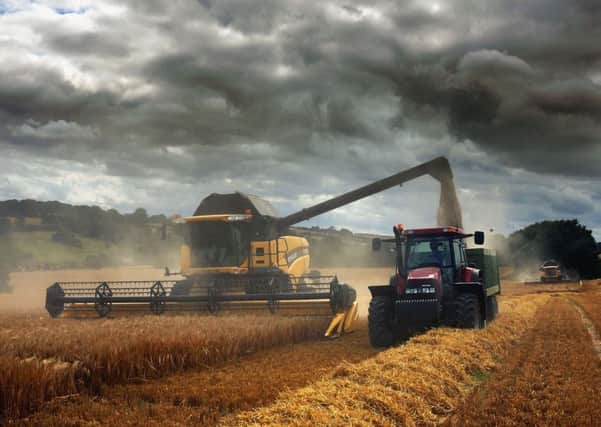Land values hold steady despite commodities fall


This has given rise to another belief, and that is that one of the consequences of more farms coming up for sale will be that land values will fall.
This week, land agent Charles Dudgeon, who heads up Savills team in Scotland, robustly spiked both these views. From a vantage point of more than a quarter of a century’s experience in the buying and selling of land, he pointed out that poor profitability in the industry had on previous occasions taken two years to come through before farms came up for sale.
Advertisement
Hide AdAdvertisement
Hide AdHe then pointed to what he described as the value gap as a reason for continued optimism in Scottish land values. The gap occurs when farmers from other parts of the UK can sell up where they are currently farming and because of higher values of land in those areas, buy larger properties in Scotland or in the North of England.
He claimed the gap in farmland value between the south of England and Scotland had never been as wide and this was a driver for English buyers heading north.
More recently, he added, his company have been receiving enquiries from Northern Irish farmers who had been strong buyers of land in the 1990s but who had faded out of sight as their economy crashed in the first decade of this century.
Now with prices in their homeland back up to £12,000 to £14,000 per acre, a second wave of Irish farmers were looking to sell and come to Scotland.
As to what kind of farms, buyers were looking to buy, Dudgeon said the recent trend to buy the best would continue with the result that top units would be very much in demand and their values would rise disproportionately to the rest of the market.
In refuting the idea that more land was coming on the market, he said he did not see it. Even although the supply had risen by 47 per cent since 2014, it was still well below previous levels.
An analysis of those who were selling up showed that one in five had done so for reasons of debt but he pointed out this was a lower percentage than in the 1980s when interest rates were in double figures. Now interest rates are at an all-time low although bank repayment rates were putting pressure on some farmers.
A larger percentage of farmers were giving up because of what he described as “plain wear and tear” on their bodies.
Advertisement
Hide AdAdvertisement
Hide AdHowever, that left them with a problem as farmland was not only a safe haven for assets but it had also risen in value ahead of other areas of investment such as the stock exchange.
Looking forward, Dudgeon predicted the creation of what he described as new farming “dynasties.” These would not be formed through better farming or, as previously, through the sale of land for development but they would come from those who had invested in wind turbines, solar panels, anaerobic digesters and other forms of renewable energy.
